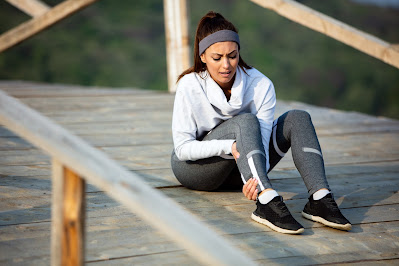 Leg cramps are one of the most common ailments people have. They’re especially prevalent in older people and pregnant women. Foot and leg cramps typically happen after unusual exertion or during sleep (“nocturnal leg cramps”). Mostly they happen because of dehydration or muscle strain. But sometimes they have much more serious reasons than that, like blood clots, nerve compression, or a mineral deficiency.
Leg cramps are one of the most common ailments people have. They’re especially prevalent in older people and pregnant women. Foot and leg cramps typically happen after unusual exertion or during sleep (“nocturnal leg cramps”). Mostly they happen because of dehydration or muscle strain. But sometimes they have much more serious reasons than that, like blood clots, nerve compression, or a mineral deficiency.
Brightside has collected a few key recommendations we could adopt to treat and prevent leg cramps.
1. Drink a lot of water.
Dehydration is one of the most frequent causes to leg cramps. That’s why it’s very important to drink plenty of fluids during the day, especially during a workout. Even if you’re already having a cramp, water can help you to relieve it.
2. Eat food high in minerals.
The deficiency of four essential minerals: calcium, potassium, magnesium, and sodium can have an influence on how our muscles contract. So it’s very important to maintain their balance in our body.
3. Consume apple cider vinegar.
Consumption of apple cider vinegar is very beneficial if you’d like to get rid of leg cramps, because it contains a large amount of the essential minerals (sodium, magnesium, and potassium). And it also balances different bodily fluids and prevents dehydration.
4. Massage your cramps away.
When a muscle is cramped, it’s usually not getting enough blood flow, which leads to a shortage of oxygen and other important nutrients. Massage can restore the blood flow, relax the muscles, and relieve the pain. It can be also used as a preventive measure.
5. Apply hot and cold compresses.
You can apply a heating pad over a cramped muscle, which will relax it by increasing the blood flow to it. You can also use an ice pad which will numb the area and decrease the swelling. Or you can alternate hot and cold compresses. This one can’t be used by people suffering from diabetes, migraines, or other medical conditions that result in numbness in the limbs.
6. Don’t sit all day long.
Leg cramps might appear due to under-conditioned muscles. If your work requires sitting, try to stand up at least every hour and walk during lunch if it’s possible.
7. Do towel stretch.
While having leg cramps it’s very helpful to stretch your muscles. One of the most useful methods is stretching by using a towel, a scarf, or a necktie: sit down with your legs stretched in front of you pointing your toes up. Sling a towel around your foot holding an end in each hand and pull the towel to lift the cramped leg.
8. Do stair calf stretch.
Stand straight facing up the staircase with both feet on the bottom stair. Place your hands on a wall or a handrail for support. Scoot your feet back until your heels jut off the front edge. Shift your weight over one of your feet. Slowly lower it’s heel toward the floor. Stop when you feel a light stretching sensation in the calf of your lower leg. Hold this for 30 seconds.
9. Do toe stretches
It is also very helpful to stretch your toes, if you’re having toe cramps. You can do it for prevention as well.
10. Take hot baths with Epsom Salt.
An epsom salt bath is a great way to get more magnesium. Some people actually absorb it better through the skin than when consuming it through food. A hot soak using epsom salt can relieve and prevent muscle pain.
11. Practice acupressure.
There are some specific points on our bodies which we should pay attention to, if we’d like to find relief from agonizing leg cramps. The pressure on those points should be high, but not hurtful. One of the points is between your big and second toes. The other one is between your nose and upper lip, closer to your nose by one third of the distance.
12. And don’t forget: always stretch before and after you exercise.
Have you ever suffered from leg cramps? Maybe you know some other way to deal with them? Share it with us in the comments below and help those of us who still haven’t found an effective cure.
